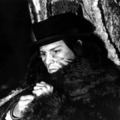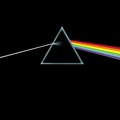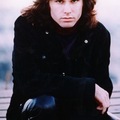Jimi Hendrix between Hell and Angels
People, Hell and Angels is the title of the album, which is almost 43 years after the death of Jimi Hendrix, another addition to his universal art. Cleaned from several decades of piracy and music bungling, the disc presents the studio recordings between 12, 1968 and 1969 as Jimi imagined those experiments in the context of which the unsurpassed Electric Ladyland double LP, which he began with.
The Experience Hendrix edition carrying the Jimi legacy appeared on March 5, it has more recordings that have been added from other versions that have been known in previous semi-official publications, definitively refutes the still living misconceptions that he was an instinctive talent, in fact, he was an artist who knew the gift he recieved from God and consciously tried to take advantage of this when he was left to work in peace. Despite all appearances, the stage wasn’t what he lived for, it was the studio, where only his own expectations and the joys of creation.
The People, Hell and Angels is pure music, which certainly is not the virtuosity, but also the composition and harmony dominates. It is likely, however, that Hendrix would have further polished and enriched them if he would have had more time to reveal his skills and join it with the rapidly developing sound technology.
The record was assemled by Jimi’s former technician, Eddie Kramer and John McDermott, the artist’s half-brother and heir, with the help of Janie Hendrix's watchful gaze. The title itself was a future album which Jimi invented which would have been one of the stops on his search for a new path. With musicians who stepped put of the pop-rock genres frameworks.
There are many surprises on the disc, even for those who have followed since 1970, posthumous editions. The Earth Blues is not at all similar to the version that is the album released in 1971, Rainbow Bridge. Also a special kind of recording is Somewhere, the March 1968 recording, in which Stephen Stills plays bass and Buddy Miles plays on the drums. On the Let Me Love You song Jimi duets with saxophonist Lonnie Youngblood, with whom he often played together before Chas Chandler discovered him in 1966. In his Easy Blues instrumental fantasy he duels with guitarist Larry Lee.
Two pieces, the Isabella and the Villanova Junction were heard in Woodstock. The latter, which is a mere two-minute fragement on the record was a longer, slower, melancholic improvisation in the movie that was made about him. The last scenes of the movie consisted of the festival goers wobbling from exhaustion in the the mud and debris-covered field, it was one of the best moments of the rock cinema.
The sound of freedom in his music stayed here, four and a half decades later, the strings of Jimi Hendrix.







